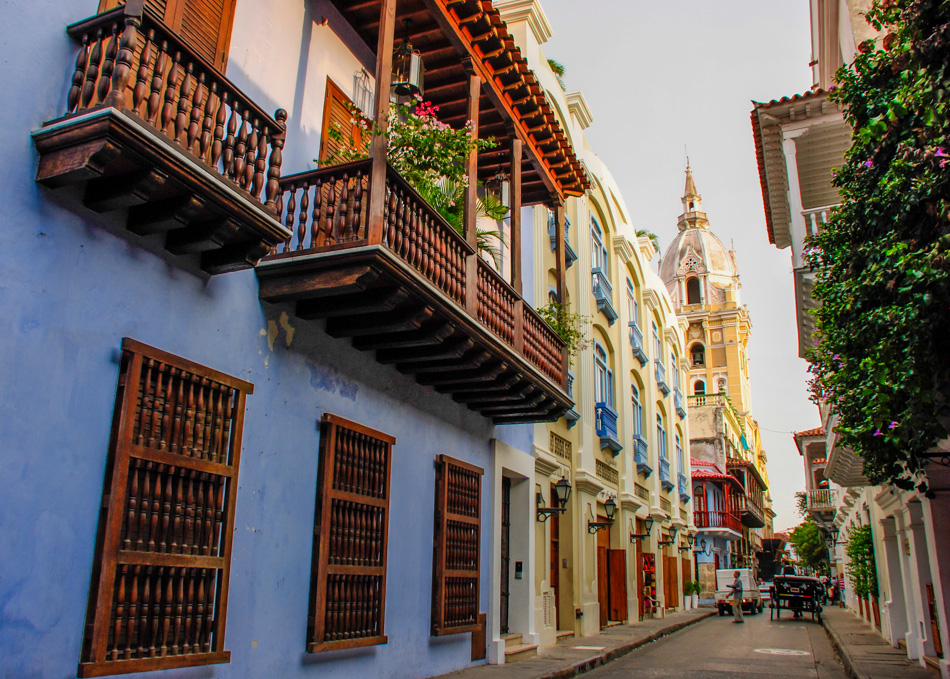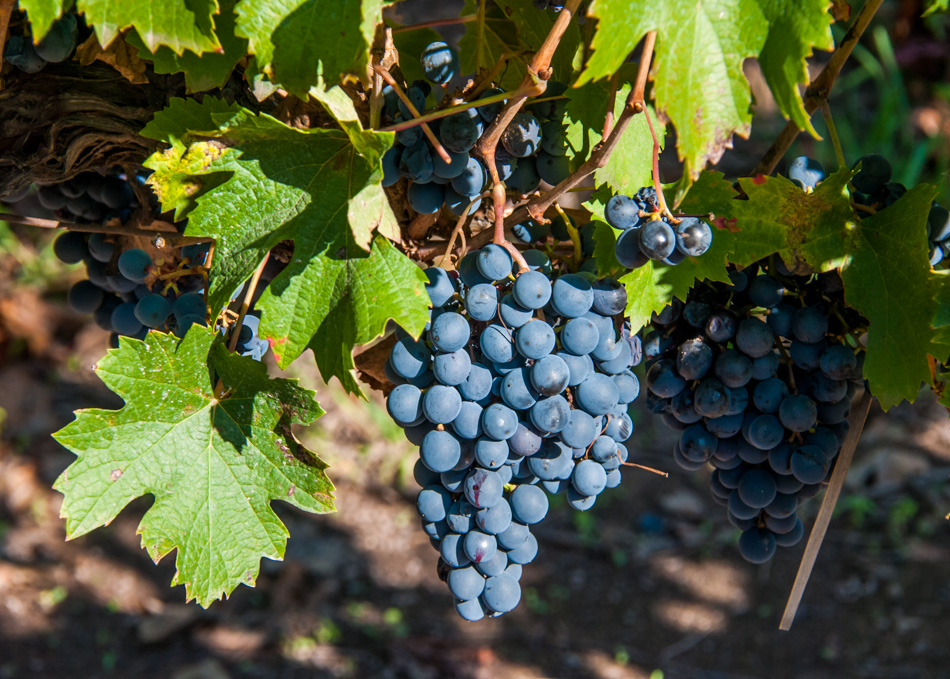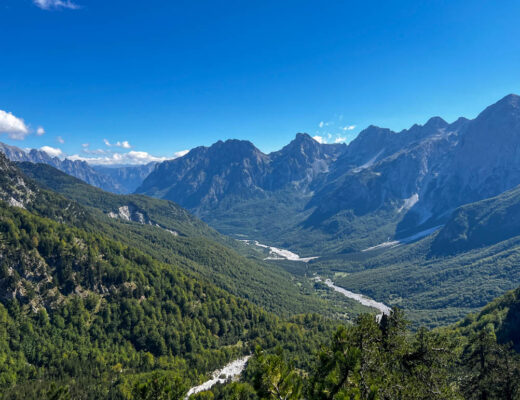Perfect for a spontaneous Caribbean weekend, Cartagena de Indias (more commonly called simply ‘Cartagena’) has the laid-back feel of your favorites sunny getaways and a historic walled city sure to surpass your highest expectations. This must-see destination has remained somewhat off the mainstream vacation radar of the general population but things are changing, the security warnings have long been lifted off, and the city has perfected that luscious mix of a fab food scene, cool new shops and hotels, and vibrant cultural heritage all against the dreamiest of backdrop.
Cartagena has the most extensive fortifications in South America and the historic center within its walls is where you’ll spend most of your time. The official entrance is through Puerta del Reloj (Clock Portal).
You’ll come out onto Plaza de los Coches (Carriages Square) where chances are you’ll run into one of the many celebrations and festivals happening in the city or just a crowd of locals hanging out, selling crafts and sweets.
From there, there’s only one way to see Cartagena and it’s to literally get lost in it, preferably at a very slow pace. It’s small enough to manage in one or two days, and the midday heat will ensure you make regular stops at the cute cafes and bars lining every street of this gorgeous World Heritage Site.
Largely unchanged since the 1600s, the heart of Cartagena is filled with churches and mansions painted in pastel colors and is where Nobel Prize laureate Gabriel García Márquez got his inspiration for many of his famous novels.
You’ll soon be in need of a refreshment in the stifling heat and there’s no better place than La Paletteria. Mixing an Italian recipe with local Colombian products, they handcraft exquisite popsicles and you’ll want to go back and try all the different local flavors during your stay (there are quite a few).
Lulada popsicle, made from lulo water and sugar

The city feels like an open-air museum as you snap shots of every insanely gorgeous balconies draped in bougainvillea and passing horse carriage.
For your sweet tooth, drop by the homey pasteleria Mila Vargas right in the center where you can indulge in their homemade cakes, cookies, alfajores, brownies and pies, as well as a menu of savory snacks, all very indulgent!
Fried cheese croquettes followed by the house specialty: Sinfonia de coco y dulce de leche!

Horse-drawn carriages are almost as numerous as the cars in this part of town.
In this tropical paradise, fresh fruit juices are available everywhere for a song, from the humble citrus at the corner…
…to a more elaborate concoction with lychee, ginger and tamarind at La Perla, a wonderful Peruvian restaurant.
Try one of their ceviche for a light and healthy lunch, this one loaded with octopus, sea bass and avocado.
Another excellent restaurant is Donjuán, a stylish bistro whose Colombian chef trained at three Michelin restaurants in Spain.
He dishes up Spanish-inflected Caribbean fare and the chargrilled octopus with bacon shouldn’t be missed.
All the plazas are worth lingering at, and the Plaza Santo Domingo is especially lively.
It was recently decorated with the sculpture Mujer Reclinada (Reclining Woman), a gift from the renowned Colombian artist Fernando Botero.
Breakfast in Colombia is usually pretty hearty and filling with the most popular item being arepa de huevo, the Colombian equivalent of our breakfast sandwich which you should absolutely try. When you’re not feeling so peckish, go to La Esquina del Pan de Bono across from the University for their famous pan de bono which is heaven when fresh and hot.
The small round bread is made of yucca and corn flour and cheese, and is slightly gooey inside when hot. You won’t be able to resist the smell if you pass by a bakery selling it, and it’s the perfect light breakfast with a local smoothie made of exotic fruit. That morning I went with a Nispero (loquat) smoothie – deelish!
The northern part of the old town is home to a few more grand buildings, notably the Teatro Heredia and its splendid architecture in front of Plaza de la Merced.
Nearby Hotel Santa Clara, a luxury Sofitel hotel, is housed in a former convent and well worth walking through.
Have a drink in the colonial patio surrounded by luxuriant vegetation.
Once out of the hotel, you’ll find yourself in San Diego, a distinct neighborhood of the old town characterized by a quieter, more residential vibe and winding colorful lanes.
The quirky facade of Argentinian restaurant Patagonia Asados del Sur

The neighborhood hides some culinary gems too such as El Boliche Cebicheria, considered by many to be the best ceviche in the whole town.
The tiny restaurant on a backstreet offers excellent Colombian-style ceviche from the day’s freshest catch. You’ll be salivating in front of the colorful transformation of octopus, squid, conch and freshly-caught fish which the talented chef marinates in tamarind sauce or coconut milk with cilantro.
As the sun goes down, the old town turn on an even more festive air with the plazas filling up, street lights illuminating the colorful houses, and musicians gathering to provide the kind of hip-shaking soundtrack perfectly suited to these sultry Cartagena nights.
Before heading out to dinner, make sure to take a look at the sunset from the old walls, a favorite spot for couples up and down the coast. No doubt Cartagena is a city for lovers…












































